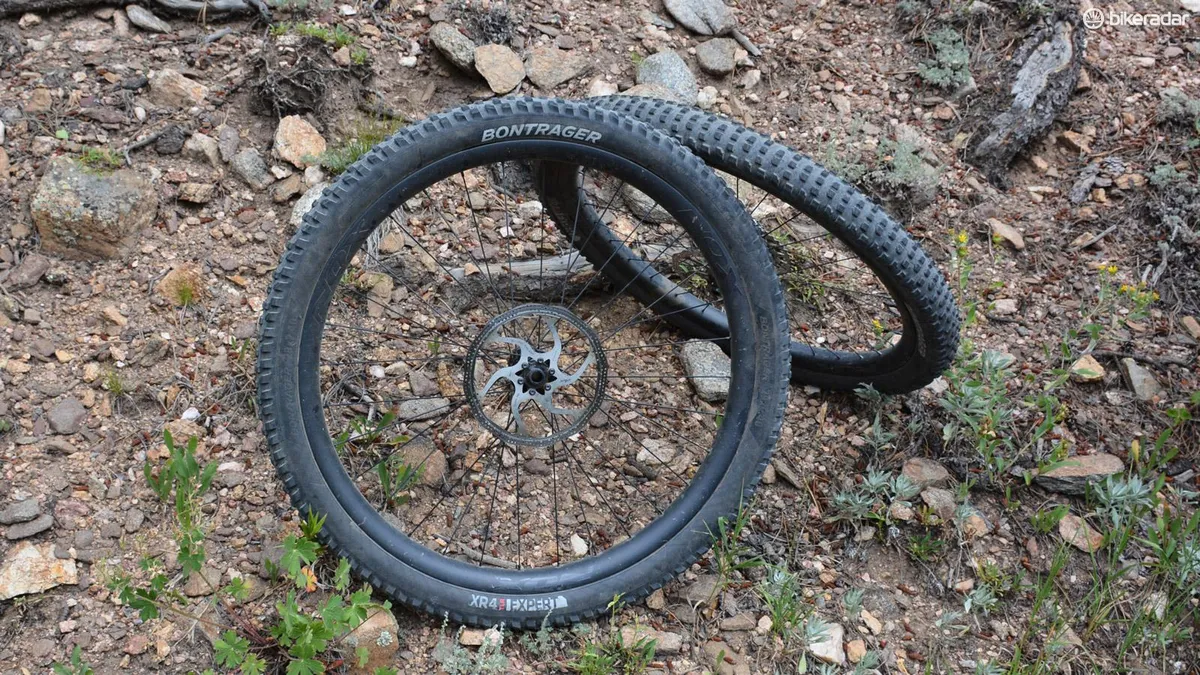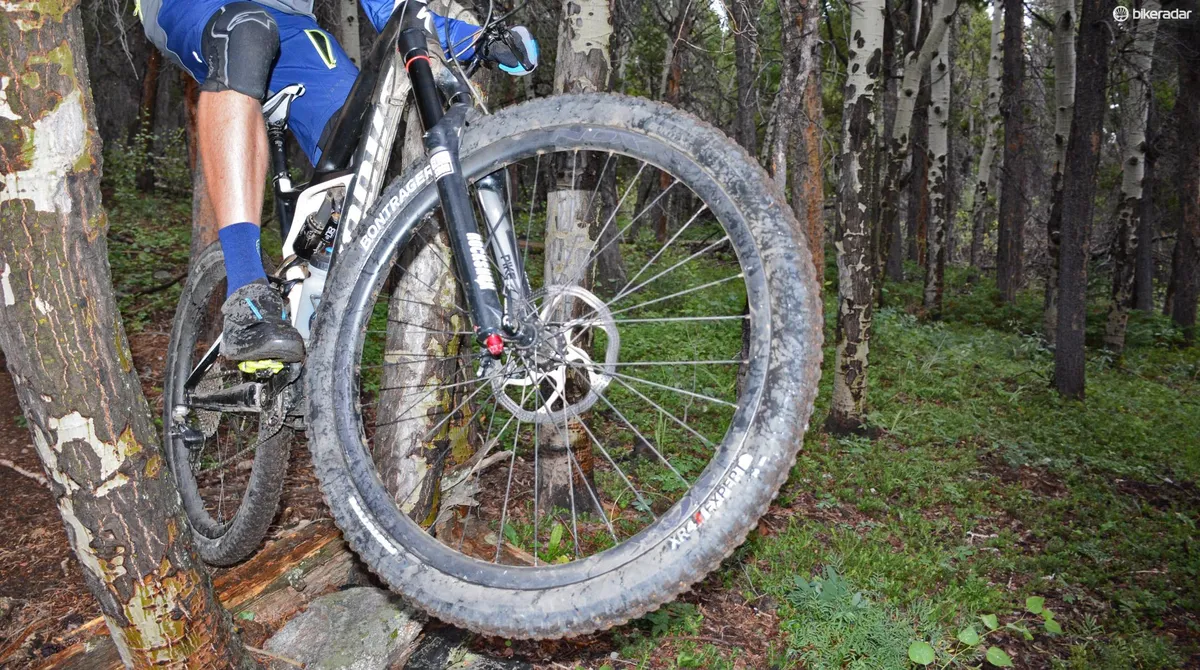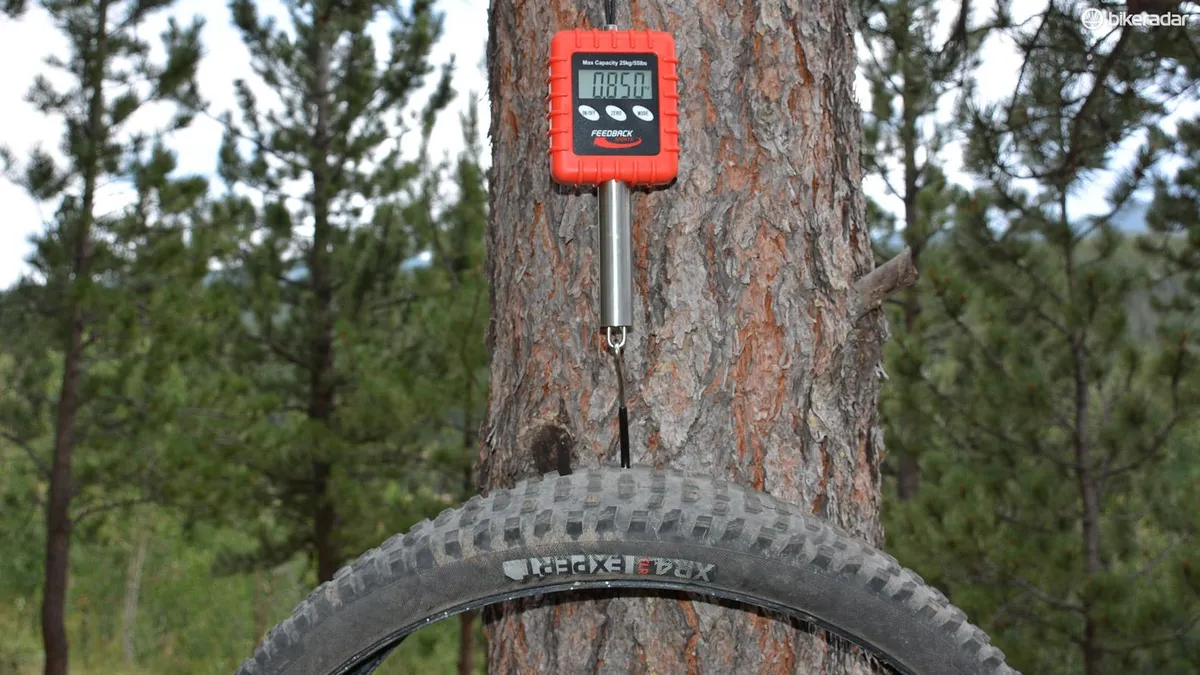Bontrager's XR4 tires have been popular treads for all the right reasons: good traction, decent rolling resistance and acceptable life span. Basically, most of the things mountain bikers are looking for. Not content to rest on its laurels, Bontrager has updated the tread pattern and added some width. But is the update a good thing?
I tested the XR4 tires with updated tread pattern in 29 x 2.4in. 2.4in is certainly a big tire, but it is not a plus size tire, as those run 2.8-3.0in typically. 2.4in tires should work in most forks and rear ends of bikes having 140mm of travel or more. I ran the XR4s first only on the front (XR3 on the back) then mounted XR4s front and rear.
- Maxxis Aggressor EXO tire review
- Specialized Ground Control 2Bliss tire review
- Onza Canis C3 Skinwall tire review
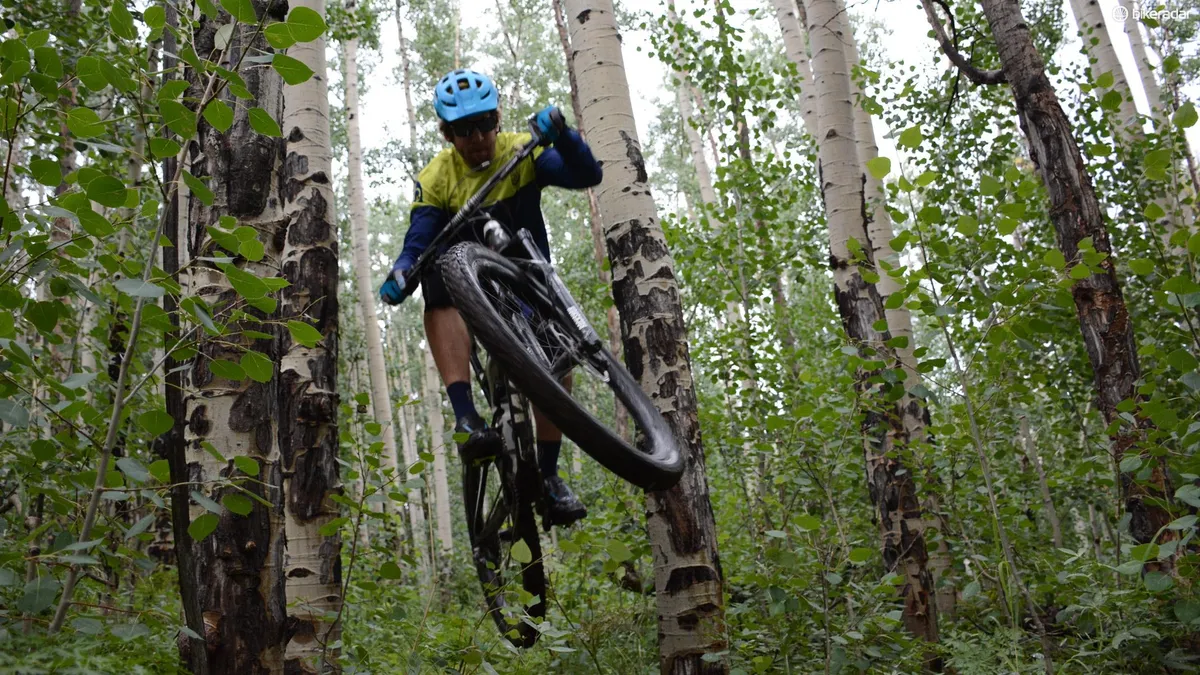
Bontrager XR4 Expert TLR specs
- Built for loose, rocky conditions
- Tubeless ready for easy set-up and puncture protection
- Inner strength casing sidewall protection
- 60 TPI casing
- 61a/50a durometer dual rubber compound
- 29x2.4in
- 850g on my scale
Set up
I slipped the XR4s over Nox Composites' massive (36mm internal) Kitsuma carbon rims. The beads were tight, but nothing a decent tire lever couldn't handle.
Decent is the key word there, as a trail side repair with mediocre levers had me cursing up a storm. Once mounted, I found little patience in fighting to air them up with a floor pump and quickly hit them with a compressor, which instantly saw the beads snap into place. I ran Orange Seal for the first test session, which sealed the XR4s effectively with zero bubbles or pesky air loss.
Dialling in pressures
Honestly, I found it a bit hard to find sweet pressure spot. I started by running 20 psi front and 25 psi out back. That felt okay and didn't puncture, so I went lower. Down to 17 psi front, that felt even better but now I could feel the tire's sidewalls squirm when pressing hard.
I dropped the rear to 20 psi, this too felt even better until I noticed the rim bottoming out on square rocks and large roots, but to the XR4's credit, I wasn't awarded any flats or pinches. I settled on 18 psi up front and 22 psi rear, that seems to about the ideal combo for the nasty, rocky trails I ride.
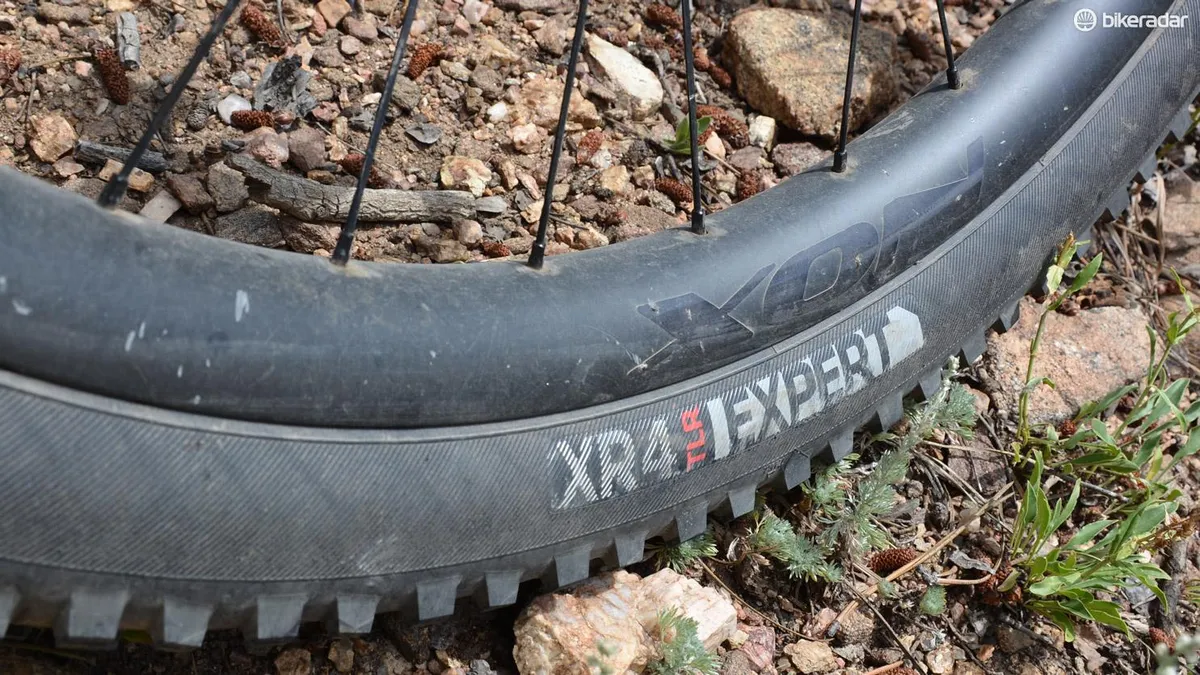
On the dirt
I rode a lot of days on the XR4s, everything from tight, wooded singletrack to above tree-line rock smashing, to flowy jump trails, and from wandering around in the forest to busy trailheads, the XR4s saw a bit of everything. The 36mm wide Nox rims spread the XR4 tires nice and wide. Thankfully the XR4's tread has a bit of roundness, which is good because super square tires, such as Maxxis High Roller IIs, on mega wide rims make me very, very crashy.
There's quite a big contact patch and I found by clamping on the discs the amazing deceleration could practically shift some internal organs around.
The XR4s don’t have pronounced side knobs or the large transition zone between the center and side knobs, like a Maxxis Minion or High Roller, so that makes them a bit drifty if pushed hard in the twisties. The knobs it does have are medium in size, not small and pointy which bite into sandy, kitty litter surfaces, and not oversize, which grab loam and real dirt.
But that also makes them oh so fun when I was on my game, and riding like a goon. Weighting the bike's front-end and letting the back-end slide around and then, when stomping on the pedals, feeling the knobs catch and slingshot me forward made me adore the XR4s. It's good fun, although a bit out of control, yet when "yeeehaw, best corner ever!” kept popping to the front of my mind, it seemed worth it.
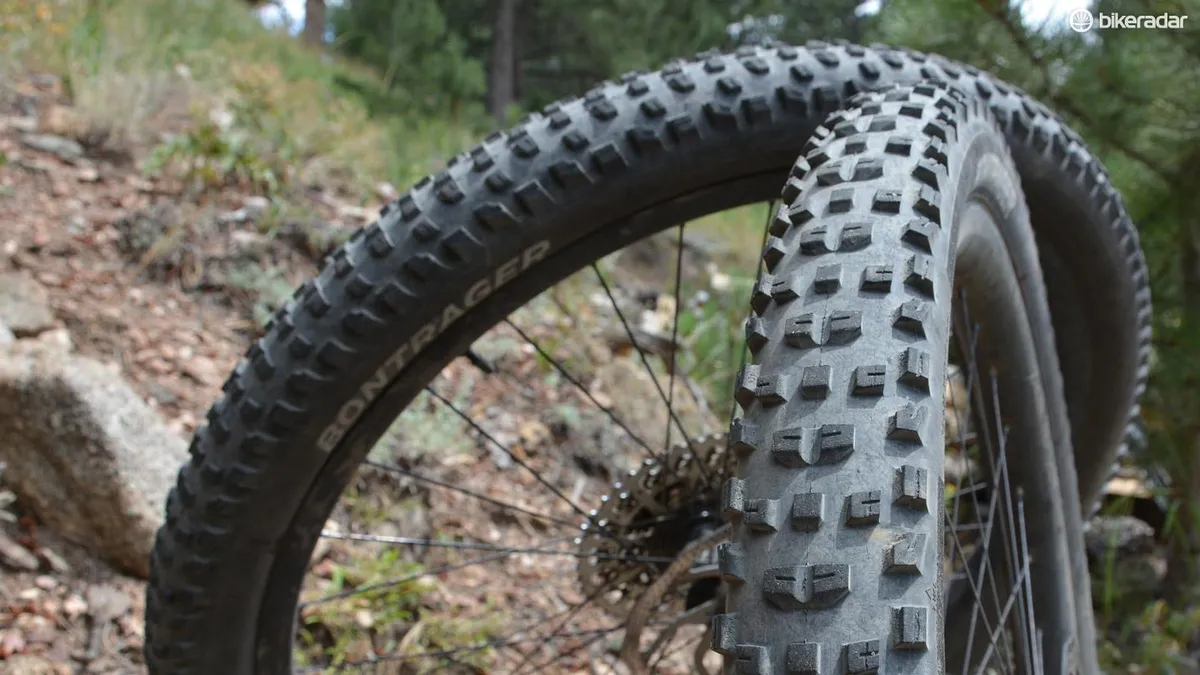
The big tire benefits continued. The traction when braking, especially weighted braking (when you weight the bike as you brake, think of jumping on a scale), was borderline insane so much so that when I just had the front XR4 tire mounted I was endoing at all my normal braking spots. There's quite a big contact patch and I found by clamping on the discs the amazing deceleration could practically shift some internal organs around. The big contact patch also made off camber riding much easier and less slippy.
Bontrager's Inner Strength sidewall protection did its job well. It's very common for my tires to find early graves due to sliced sidewalls, but so far the XR4s have survived. I did manage to puncture the tread, which was eventually clogged by sealant. And I'm very pleased to report that all the knobs are still intact, none have gotten ripped off which too is very common on these trails, and pretty impressive considering the updated 50a durometer used on the side knobs.
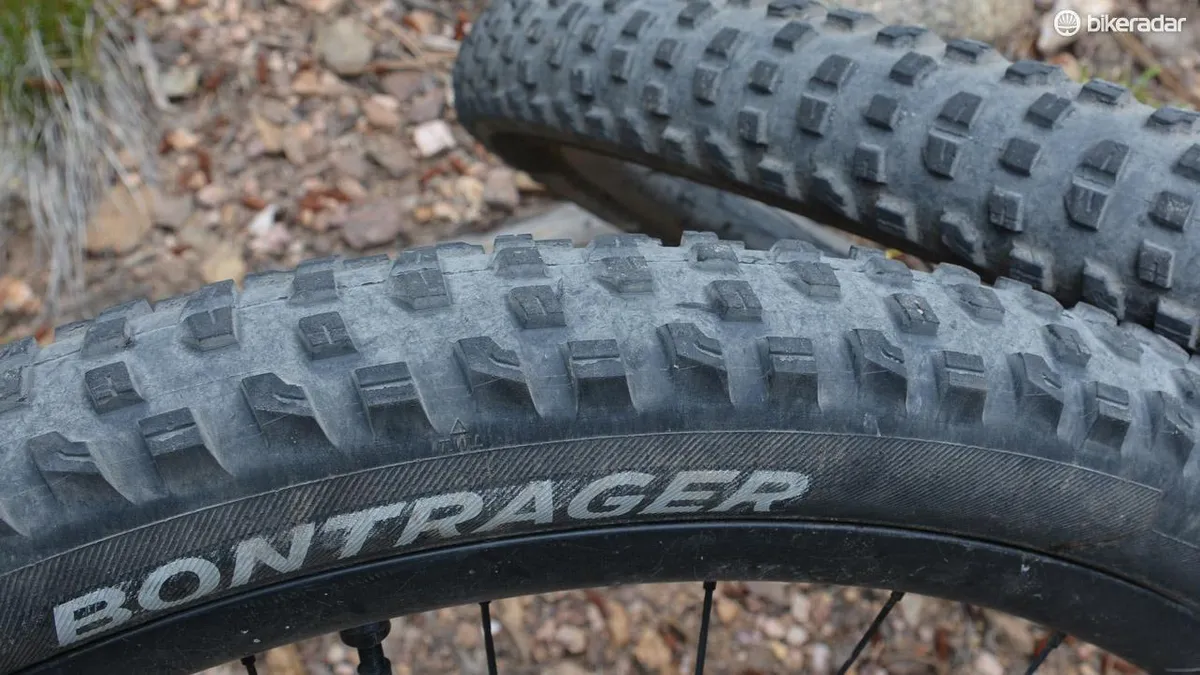
I found I had to have the pressures right otherwise I could feel the tire casing flex when pumping hard in corners or when landing a jump. It was particularly unnerving when launching into a rocky section and bouncing off your intended line.
With proper air pressure, smacking down off ugly drops, or casing jumps was met with a cushy touch down, it was almost like having another inch or so travel in some instances. And I'm not sure if it's worth mentioning, but I found the XR4s hard to manual and wheelie, maybe it was due to the lower pressures, maybe it was the rounder profile, but something made it difficult to keep the front wheel aloft.
Bontrager XR4 Expert TLR pricing
US$54.99 / GB and Australian pricing to be confirmed
